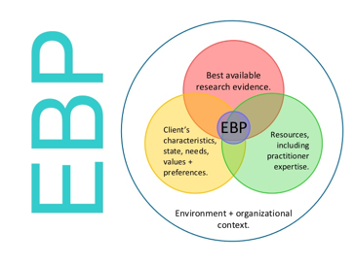Evidencing your approach
Understanding of how to support survivor wellbeing, trauma processing and recovery is constantly developing. It is good practice to build in a culture of openness, learning and evaluation into your service and to base your delivery on currently available evidence.
Ideally your evidence should be drawn from robust sources which integrate and synthesise current published literature from numerous studies and evaluations which are informed by practitioners and survivors. Some of the interventions directed at complex trauma (e.g. EMDR) by their design lend themselves more easily to being researched or evaluated and therefore there is a stronger evidence base.
In some circumstances, evidence may be more difficult to gather, for example where there are ethical considerations (such as the potential survivors may be retraumatised by research tools or processes), or where resources have not been made available to design and gather appropriate evidence.
Organisations supporting survivors strive to be survivor-centred and trauma-informed, as such you should place a number of other factors alongside your consideration of evidence as illustrated below.
What should you do if evidence does not yet exist to support an approach?
Where evidence is absent but wellbeing support and trauma treatment approaches are reported by practitioners and survivors to be of benefit, then it is important, wherever possible, to collect, explore and present such feedback to funders and other practitioners.
Collaboration with people who have experienced trauma, funders and partners is key to achieving this. Through your work you can seek to verify the tacit and participant evidence in as robustly as possible. By doing so, it provides an understanding about the feasibility of implementing larger studies and helps to validate or refute areas of practice where evidence is currently absent or approaches are innovative. In Section 5A, we shall share tools and approaches which help this.
Conclusion
It is important for you to draw upon a range of sources and to know where evidence of benefit/impact does or does not exist for your approaches and the strength of that evidence. It is also vital to know where there is, or is not, evidence of harm and, or unintended consequences from the support provide or approaches used.
More information on how to make best use of evidence can be found in the following resources.
Previous
Further reading
Next
Section 5A: Measures and Scales
